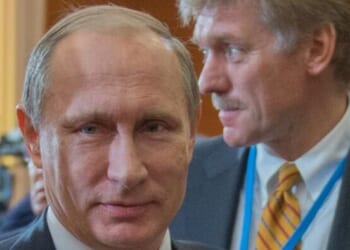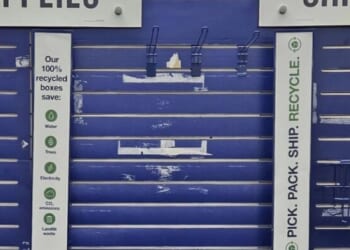Author’s Note: I wrote this essay in grief and fury, but above all in urgency. Gaza is not a metaphor — it is a place where children starve, hospitals collapse, and families vanish beneath rubble while the world debates terminology. The blockade is not a policy dispute; it is a strategy of annihilation. Two years in, we must resist the normalization of atrocity and demand that language, law, and conscience be reclaimed from the machinery of Israel’s impunity.
***
Gaza’s Siege Is Not a Means to an End, It Is the End
Two years into Israel’s war on Gaza, the enclave is unrecognizable. Israel has exterminated (no other word is as apt) over 67,000 Palestinians, most of them civilians. At least 20,000 children are among the dead. It has wounded more than 170,000, many with injuries more typical of combat soldiers than civilians. It has erased entire families in single airstrikes. Thousands of Palestinians remain missing under the rubble.
What kind of regime would then follow these atrocities by enforcing siege and blockade?
One might recall the Warsaw Ghetto, where Nazi forces not only confined Jewish civilians but also subjected them to starvation, disease, and relentless bombardment — culminating in mass extermination. Yet even that horror, as historically singular as it was, did not unfold under the pretense of humanitarian concern or democratic self-defense.
The difference here lies in the rhetorical inversion: a state claiming liberal values enacts a total blockade on food, water, and medicine, while simultaneously insisting it is targeting only combatants. The siege is not a prelude to atrocity — it is its continuation. It does not merely set the stage for violence; it is violence enacted through deprivation, isolation, and slow erasure. Every denied shipment of medicine, every bombed bakery, every fisherman chased from Gaza’s waters is not preparation for war — it is war. The blockade is not a temporary measure awaiting resolution; it is the resolution itself, designed to collapse a society from within. It transforms daily life into a battlefield, where survival becomes resistance and starvation becomes strategy. In Gaza, atrocity is not a moment — it is a system. And the siege is its most enduring form.
And unlike historical parallels where regimes sought to erase evidence, here the destruction is livestreamed, archived, and debated in real time, yet met with impunity.
The War on Life Itself
And then, as if the devastation of homes and lives were not enough, Israel turns its cruelty toward the very systems meant to preserve life. It has systematically destroyed infrastructure, damaging or obliterating over 90% of homes, deliberately rendering hospitals barely functional.
Only 14 out of 38 remain open, most operating at over 200% capacity. Medical supplies are at zero stock for over half of essential drugs. Cancer patients, dialysis patients, and pregnant women are dying not from illness, but from blockade-induced neglect.
The targeting of hospitals and the engineered collapse of medical infrastructure is not collateral — it is policy. It transforms treatable conditions into death sentences, making survival itself a form of resistance.
Starvation as Strategy
If there was a fleeting moment of relief for Gaza’s fishermen, it came during the interception of the Global Sumud Flotilla in early October. As Israeli naval forces turned their attention to detaining over 450 activists from 42 countries, Gaza’s fishermen seized the distraction.
“We hauled in fish for the first time in months,” one man said, “but only because they were busy arresting foreigners.”
Videos showed men dragging heavy nets ashore as crowds cheered — a rare moment of sustenance under siege. But that window has slammed shut. During the second wave — the Addameer-led Freedom Flotilla — Israel intensified its blockade.
“This time, they [Israeli navy] didn’t leave the coast,” said Ahmed Bakr. “They chased us back before we even touched the water. It’s like they want us to starve and disappear.”
Israel is not just starving Gaza — it is engineering starvation. It blocks aid trucks, rejects basic supplies, bombs distribution sites, and manipulates the narrative. In July 2025, Israel allowed only 28 aid trucks per day — down from 600 during the January ceasefire. UNRWA confirmed it had enough food in Egypt to feed Gaza for three months. Israel refused to let it cross. On July 19, Israeli forces shelled a food distribution site in Gaza City, killing 49 and wounding 270. Finance Minister Bezalel Smotrich said in August 2024 that it might be “moral and just to starve Gaza” to retrieve hostages. A year later, that policy is reality.
The UN declared famine in northern Gaza in August 2025. Over 460 people, including 154 children, have died from hunger. Water access has collapsed: one million people receive less than six liters of drinking water per day. Cropland is 91% destroyed. Fishing is banned. Bakeries are bombed. Aid convoys are blocked or fired upon.
One might recall the Allied bombing of German cities during World War II, particularly Dresden, where civilian infrastructure — including hospitals — was obliterated in firestorms. Yet even in that case, the destruction was framed as part of a broader military campaign against an industrial war machine, not as a sustained siege designed to starve and medically isolate a captive population.
What distinguishes Gaza is the precision of its isolation: the blockade ensures no medicine enters, no fuel powers generators, no ambulances reach the wounded. It is not war as clash of armies, it is war as slow suffocation, where the absence of care becomes a weapon. Israel has barred international journalists from entering Gaza since May and killed over 100 Palestinian journalists. Western media reports “clashes” and “complexity” while Gaza burns.
Humanitarian Aid as Provocation
And when the siege tightens to the point of famine, even the possibility of external relief is treated as a threat. The interception of humanitarian flotillas — most notably the 2010 Mavi Marmara, and again now in 2025 with ships carrying food, water, and medical aid — reveals the extent to which Israel enforces not just territorial control but the denial of sustenance itself.
These flotillas, often organized by civil society groups and international coalitions, are met not with coordination but with military force. Their interception and the detention of their passengers are not a defensive maneuver — they are a declaration that starvation is strategic.
Historically, one might compare this to the British naval blockade of Germany during World War I, which led to widespread civilian hunger and malnutrition. Yet even that blockade, brutal as it was, operated within the framework of declared war between states.
Gaza’s blockade is imposed on a stateless, occupied population, with no army, no navy, and no escape. The difference is not only legal — it is moral. Where past blockades sought to pressure governments, this one seeks to collapse a society. And when boats carrying flour and antibiotics are treated as provocations, it becomes clear: the siege is not a means to an end. It is the end. Not a tactic to pressure leadership, not a temporary measure to secure borders, but a sustained architecture of annihilation.
The Architecture of Annihilation
And as Gaza burns — its children buried beneath rubble, its hospitals turned to morgues —
Trump fiddles, cloaked in the language of peace. His so-called “Deal of the Century” did not offer a roadmap to justice or dignity; it offered a blueprint for permanent dispossession.
By legitimizing Israeli annexation, fragmenting Palestinian territory into disconnected enclaves, and denying the right of return, the plan reframed apartheid as negotiation. It did not extinguish the fire — it poured accelerant on it, codifying siege as diplomacy.
While Gaza starves, Trump stages press conferences. On September 28, 2025, he unveiled a 20-point “peace initiative” alongside Netanyahu. The plan promises reconstruction, ceasefires, and hostage exchanges — but only if Hamas disarms and relinquishes control. Trump warned of “complete obliteration” if Hamas refuses. Netanyahu called it “a great deal for Israel.”But for Palestinians, the initiative is not a path to peace — it is a demand for surrender. It offers conditional relief in exchange for political erasure, framing basic human needs as bargaining chips. The promise of reconstruction is dangled as reward for relinquishing sovereignty, while the threat of annihilation looms as punishment for resistance. It rebrands siege as diplomacy, and coercion as negotiation. For Palestinians, it is not a deal — it is a decree: accept permanent subjugation or face continued extermination.
And while the cameras rolled in Washington, Israeli forces bombed Gaza City, blocking aid convoys, shelling hospitals and killing children by hunger. The plan was not coordinated with Palestinian leadership. It was diplomacy as spectacle — negotiation without negotiation, peacekeeping without peace.
Trump’s team called the plan “historic.” But it ignored the siege, the starvation, the mass graves. It offered no accountability for war crimes, no restitution for stolen gas, no justice for the dead. It was a press release dressed as policy.
The Addameer ship, named for conscience in Arabic, carried more than crutches and baby formula — it carried a moral indictment. On board were activists, medics, and artists from dozens of countries, each bearing witness to the blockade not with weapons, but with supplies and solidarity. The ship’s cargo was modest: powdered milk, antibiotics, mobility aids. But its symbolism was immense. It sailed not to provoke, but to affirm that Gaza’s suffering is not invisible, and that conscience can cross borders even when aid cannot. Israel intercepted it in international waters, detaining its passengers and confiscating its contents. Yet the Addameer did not fail — it exposed. It revealed the extent to which humanitarianism itself is criminalized when directed toward Palestinians. It showed that in a world numbed by spectacle, a ship of conscience can still rupture the silence. It sails, it resists, it refuses to be silenced — not because it expects permission, but because it demands accountability.
Trump’s conscience is not alive — it is outsourced to spectacle, where threats of obliteration masquerade as diplomacy and starvation becomes a bargaining chip.
The Legal Order’s Spectatorship
Meanwhile, the UN and the international legal order perform their own symphony of fiddling. Resolutions are passed, statements are issued, and commissions are formed, yet none interrupt the Israeli machinery ofblockade. The very institutions tasked with upholding humanitarian law have become spectators to its erosion.
Gaza is not just besieged by tanks and drones — it is besieged by Israeli impunity and by the Palestinian exception to justice. The siege persists not because the world lacks evidence, but because it has carved out an exemption from accountability for Israel’s actions, and a parallel exemption from protection for Palestinians.
International law, which promises universality, fractures at the point of Palestine. The right to resist occupation, the prohibition against collective punishment, the protection of civilians — all are suspended, rewritten, or ignored when applied to Gaza.
This suspension extends beyond land and into the sea, where Israel’s actions violate not only moral codes but binding international law. Since 2007, Israel has enforced on the Gaza strip an illegal shifting maritime boundary — sometimes 6 nautical miles, sometimes 3 — well below the 20 miles agreed under Oslo.
The interception of humanitarian flotillas in international waters — far outside Israel’s territorial jurisdiction — constitutes piracy under maritime law, yet it is rarely named as such. Likewise, the repression of Gaza’s fishermen within waters legally designated as Palestinian under the Oslo Accords breaches both the Law of the Sea and the principle of sovereign access to natural resources. Israel shells Palestinian boats, seizes them and sinks them, not for crossing into Israeli territory, but for existing in Gaza’s own maritime space.
Meanwhile, just beyond the reach of Gaza’s nets, Israel drills for gas in the Gaza Marine field — estimated to hold over 30 billion cubic meters of natural gas. Palestinians are denied access to their own maritime resources, while Israel signs billion-dollar export deals with Egypt and Europe. The blockade is not just territorial. It is economic theft, ecological sabotage, and generational punishment. The bombardment is genocide.
These acts are not defensive, they are imperial. And the silence of legal bodies in the face of such blatant illegality signals not a failure of enforcement, but a refusal to apply the law where Palestinians are concerned.
A System Bent Beyond Recognition
This exception is not accidental; it is engineered through decades of diplomatic shielding, legal obfuscation, and rhetorical inversion. When Palestinians invoke international law, they are accused of politicizing it. When Israel violates it, it is framed as self-defense.
The result is a legal order that functions not as a shield for the vulnerable, but as a scaffold for the powerful. Gaza’s siege is not merely a military strategy — it is a test of whether the international system can be bent so far that it no longer recognizes the humanity of those it was designed to protect.
And so far, the answer is yes.
The original source of this article is Global Research.










